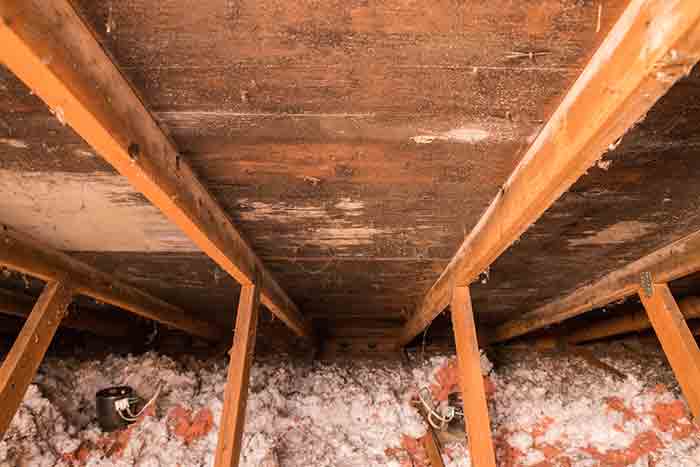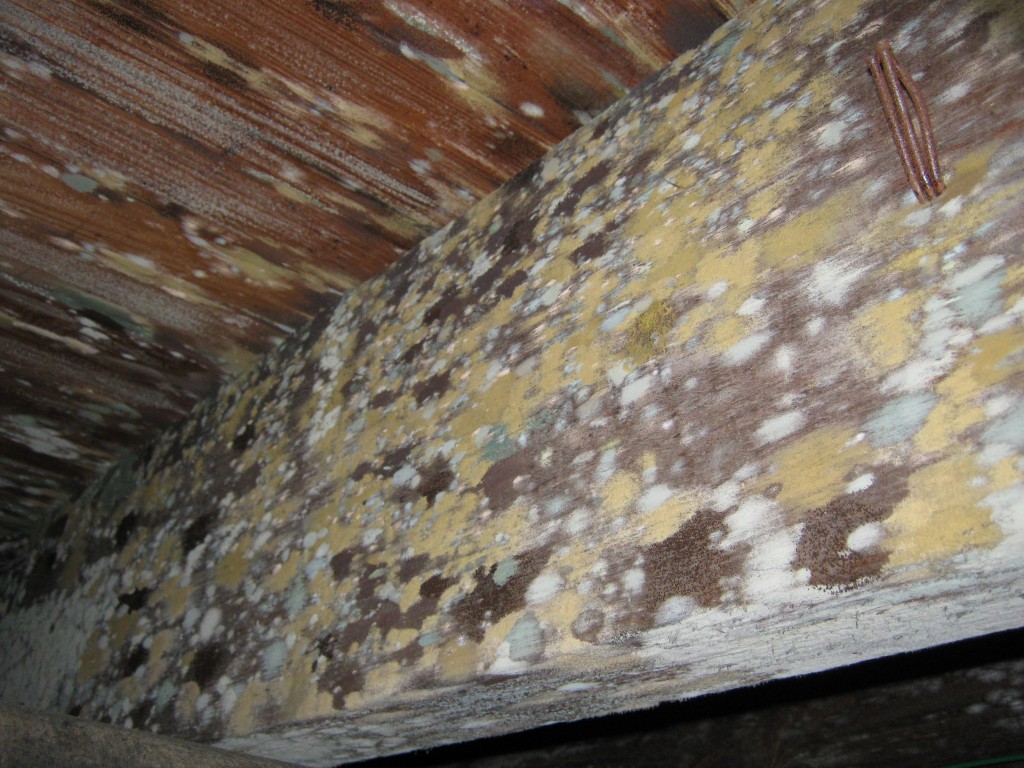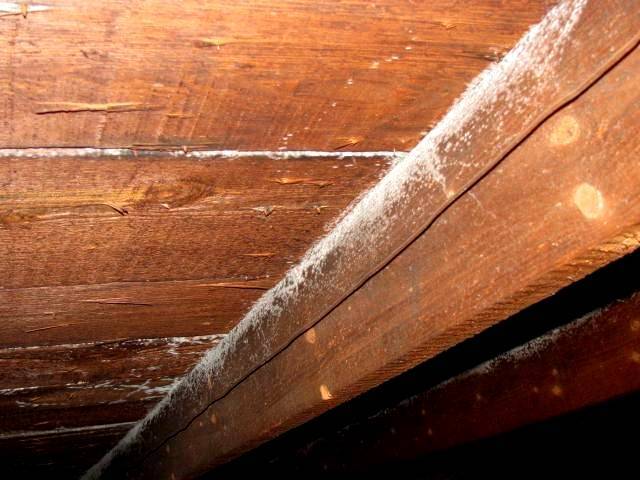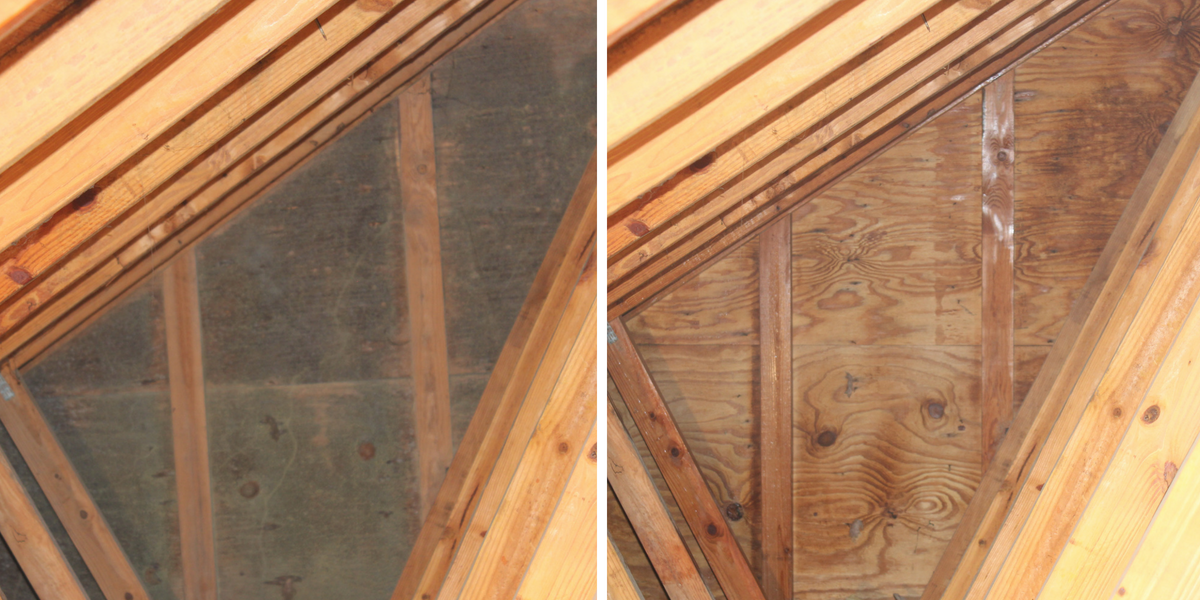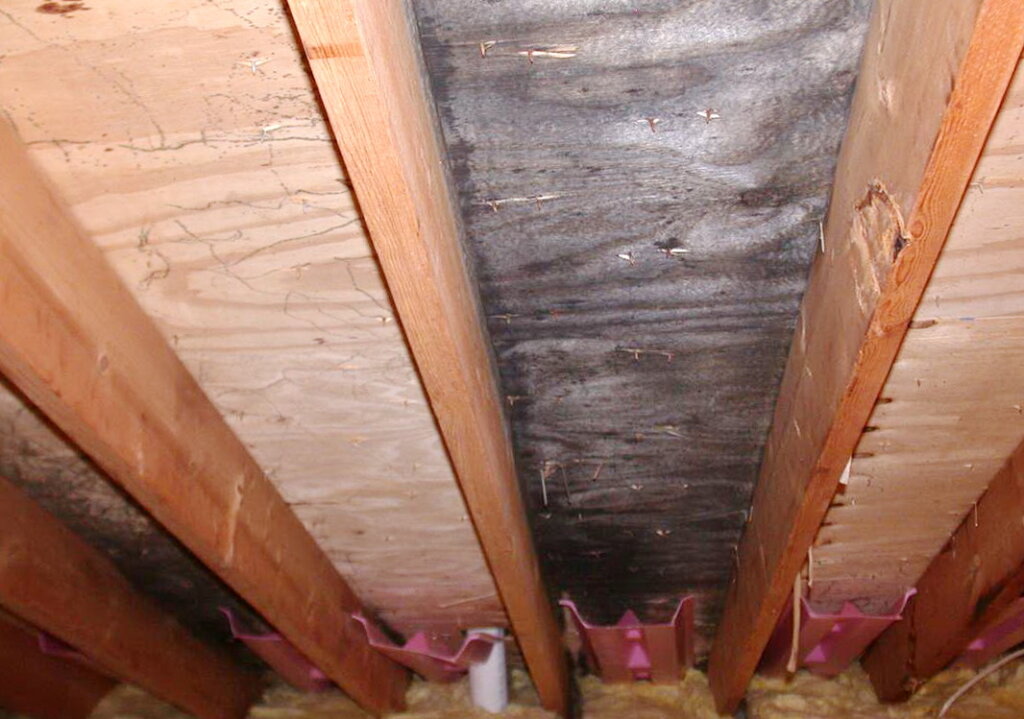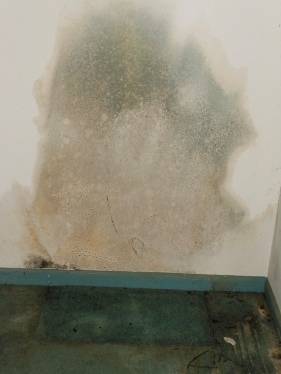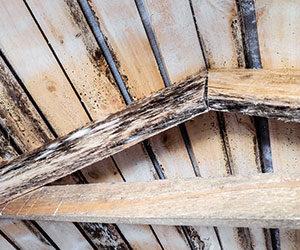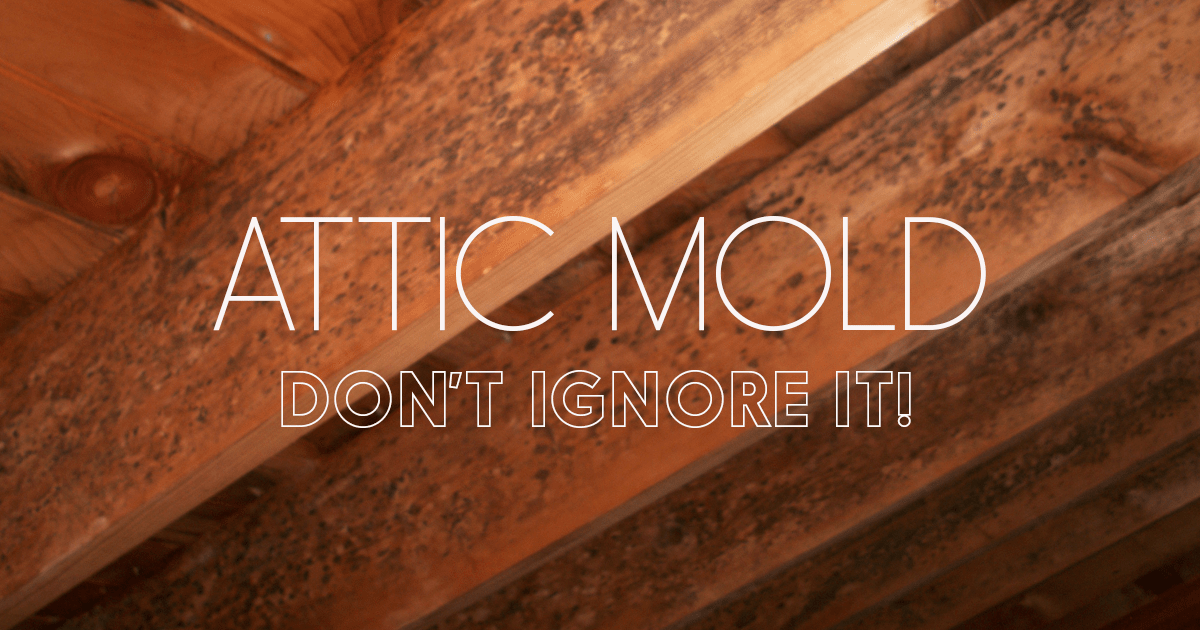Many people notice that there is a problem when they see visible mold growth in an area of their home when they smell mold or they may begin to experience the health affects of mold exposure.
White green mold in attic.
Mold growth in an attic comes as a consequence of excess moisture.
With that said we ve learned quite a bit about white mold in our many years of mold inspection and removal.
If you re ever unsure of what type you have calling in certified professionals to perform mold testing services immediately is important.
White mold tends to grow in high humidity environments rather than areas suffering from total saturation.
This is why it s less common to see mold growth on base trim after a flooding event.
Faulty roof insulation or construction can lead to leaks and a lack of proper ventilation can cause humidity to accumulate.
White mold can be hard to detect especially in the early stages of mold growth.
The most common cause of attic mold by far is blocked or insufficient ventilation of the attic space.
When looking for attic mold trace both leak areas and areas of poor ventilation in the attic.
In short you ll need to address the issue again and again which is a great frustration.
Aspergillus this mold can appear green yellow brown grey or even white and is often found growing on and inside walls.
White mold can be confused with efflorescence a mineral deposit caused by water seepage.
In the attic photograph at left we show a mix of green gray and white attic mold.
White mold is usually found in cool and damp areas such as basement walls.
It appears white or light gray like a coating of unsettled dust.
Blue green or white these molds also common belong to the penicillium genus.
You re right if you think that a type of this mold was used to make penicillin many years ago.
Cladosporium sometimes green other times brown or gray this mold can grow in cool climates as well as warm places and is often found growing on walls cabinets and carpets that have gotten wet.
However attic condensation is evidence of wet or very humid attic conditions.
If you re sensitive to mold you may develop an allergic reaction to it.
Closer inspection under good lighting will reveal a fungal growth pattern of spots like tiny mushrooms.
The vast majority of attic mold is caused by humidity which is why white mold growth is common here.
Attic sheathing and framing.
Attics usually have a passive ventilation system in which outside air comes in through the soffit eave vents at the bottom warms up in the attic and escapes through the can or ridge vents at the top because hot air rises.
Is it dangerous how to remove it.
White mold is lesser known but still an incredibly dangerous species of mold to deal with.



